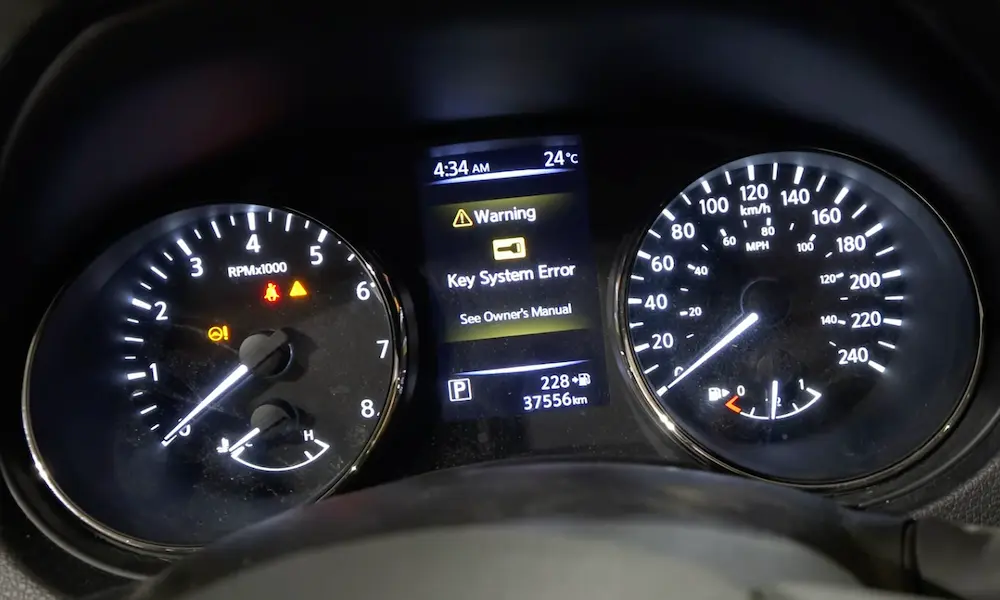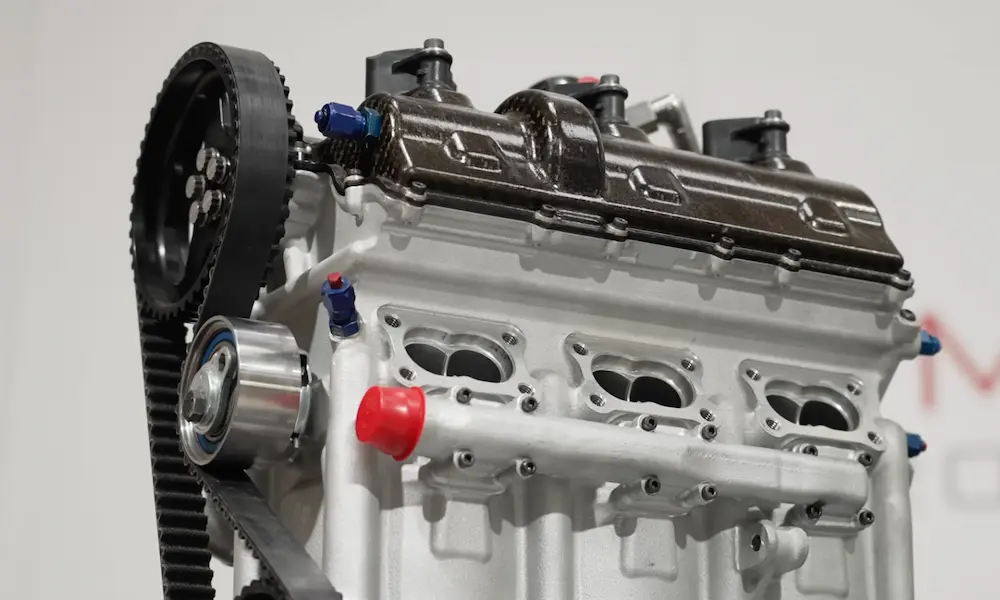If you’ve been experiencing issues with your Nissan Rogue’s transmission, you’re not alone. Many owners face problems like jerking, hesitation, and even transmission failure in certain models. Understanding these common transmission problems and knowing how to address them is crucial for a smooth driving experience. Dive into this guide to find practical solutions and tips that can help you resolve these issues and keep your Nissan Rogue running smoothly.
Common Nissan Rogue CVT Transmission Problems
Nissan Rogue vehicles have experienced a range of issues with their CVT transmissions. These problems can lead to symptoms like loss of power and unusual noises. Understanding these symptoms can help you identify potential issues early.
Transmission Failure Symptoms
Transmission problems in the Nissan Rogue often start with a few noticeable symptoms. You might feel the vehicle shaking or jerking while driving. This is often accompanied by a lack of smooth acceleration, which can make driving uncomfortable.
These symptoms can gradually worsen over time. The CVT system might struggle to change gears properly, leading to a lag when you try to speed up. If you experience these issues, it’s important to have your vehicle checked.
If not addressed, these problems can cause further damage. A full transmission failure is possible, which can be a costly repair. Regular maintenance and fluid checks might help in preventing these issues.
Loss of Power and Sudden Acceleration
Another common issue is the loss of power during acceleration. You may notice the car hesitating or struggling to pick up speed. This is often linked to CVT transmission problems and can affect your driving experience.
In some cases, your Rogue might experience sudden acceleration. This can be dangerous, especially if it happens unexpectedly. It might feel like the vehicle is speeding up without pressing the accelerator.
These symptoms are often related to the CVT system’s internal issues. If you notice any sudden changes, it’s crucial to visit a mechanic. They can perform diagnostics to identify and address the underlying problems.
Unusual Noises and Warning Lights
Unusual noises are a common sign of transmission issues. You might hear whining or grinding sounds when your car is running. These noises can signal trouble within the CVT transmission components.
Accompanying these noises, you may also notice warning lights on your dashboard. These lights are designed to alert you to potential issues with your transmission.
Ignoring these signs can lead to severe damage. It’s important to have the noise and warning indicators checked by a professional. Early detection can save you from more extensive and expensive repairs down the line.
Specific Model Years and Related Issues
When considering the Nissan Rogue, certain model years tend to have more significant issues than others. This guide will help you understand the specific problems reported with the 2013, 2011, and 2008 models, focusing mainly on transmission troubles and other related challenges.
Challenges with the 2013 Rogue
The 2013 Nissan Rogue is often associated with transmission problems, particularly related to the Continuously Variable Transmission (CVT). Owners have reported issues like shuddering and hesitation, which can affect your driving experience. Sometimes, the transmission may slip or overheat, leading to reduced performance.
Aside from transmission troubles, some 2013 models experience air conditioning malfunctions. This can be frustrating, especially during hot weather.
The 2013 Rogue’s compact SUV design is otherwise appreciated for its interior space and comfort, but staying aware of these potential issues can save you future headaches.
Problems in the 2011 Rogue
Issues faced by the 2011 Nissan Rogue often center around transmission concerns similar to those in other early models. The CVT might present jerking motions and delayed acceleration, which you should not ignore.
Brake reliability is another reported problem. In some cases, brakes may wear out faster than expected. For your safety, it’s crucial to address any brake issues promptly.
Additionally, keep an eye on fuel gauge accuracy. Some drivers have encountered faulty readings, so make sure to check the fuel level regularly.
Issues with the Initial 2008 Rogue
The 2008 Nissan Rogue, being the first model year, had its share of growing pains. Transmission failure is one of the most common problems reported. You might notice juddering or even complete CVT failure if left unchecked.
Suspension complaints also arise in this model, impacting ride quality. The suspension system might require attention to maintain smoothness and handling.
Lastly, be cautious of faulty brakes and ensure they are well-maintained. While the 2008 Rogue set the stage for future models, being informed about these issues can help manage potential repairs.
Transmission Maintenance and Care
Properly caring for the transmission in your Nissan Rogue can extend its lifespan and boost performance. Regular checks, correct fluid levels, and mindful driving habits play a crucial role. Understanding these elements ensures a smoother ride and fewer issues down the road.
Importance of Regular Maintenance
Regular maintenance helps keep your transmission functioning well. It includes periodic checks for wear and tear. Over time, components can wear out, leading to problems like rough shifting. Schedule regular inspections to identify and fix issues early.
A maintained transmission often leads to better performance and fewer repairs. It’s essential not only to keep parts in top shape but also to enhance driving comfort and reliability. Regular check-ups can save you money by preventing bigger problems.
Checking and Changing Transmission Fluid
Transmission fluid is critical for smooth operation. Check fluid levels regularly to ensure they’re adequate. Low levels can cause overheating and damage. Inspect the fluid’s color and scent; it should be clear and without a burnt smell. Changing the fluid at recommended intervals is crucial.
It helps prevent problems like slippage or delayed shifting. Use the fluid recommended by Nissan for consistent performance. Proper fluid levels and quality can significantly enhance transmission life and avoid costly repairs or replacements.
Understanding Driving Habits Impact
Your driving habits directly affect transmission health. Aggressive driving, like sudden starts and stops, can strain the system. Smooth acceleration and deceleration help maintain its condition. Avoiding overloading your vehicle also reduces stress on the transmission.
Driving in harsh conditions, like heavy traffic or extreme temperatures, can increase wear. Adapting your habits to these situations is important. Consider lighter loads and gentler driving styles. Mindful habits lead to fewer issues and prolong transmission life, making your drives smoother and more enjoyable.
Preventing and Addressing CVT Issues
Caring for your Nissan Rogue’s CVT (Continuously Variable Transmission) can help avoid problems and ensure a smoother drive. Early detection of issues and taking the right steps when faced with problems can keep your vehicle running efficiently.
How to Detect CVT Transmission Problems Early
Spotting CVT issues early can save you from major repairs. Listen for unusual noises like whining or grinding when you accelerate. These could signal problems with the transmission belt or pulley system.
Watch for signs of slipping or delayed engagement when you shift gears. This might mean that your transmission fluid level is low or needs changing. It’s also wise to look for any dashboard warning lights related to the transmission.
Routine maintenance is key. Check the transmission fluid regularly. Use the vehicle’s dipstick while the engine is running and the car is in park. Clean and reinsert it to see if the fluid is at the right level and in good condition. Replacing worn or dirty fluid can prevent further damage.
Steps to Take When Experiencing CVT Issues
If you notice CVT transmission problems, don’t ignore them. Addressing issues promptly can prevent more expensive repairs. Start by checking the transmission fluid. Low or dirty fluid can lead to slipping or overheating.
If fluid checks out, consider getting a professional diagnosis. Mechanics can run digital scans to identify error codes indicating specific issues. Knowing the problem can guide necessary repairs, whether it’s a simple fluid change or something more complex.
Follow regular maintenance intervals recommended in your vehicle’s manual. Regular checks and servicing can often prevent issues from escalating into major problems. In some cases of severe transmission damage, replacing the unit might be necessary.












